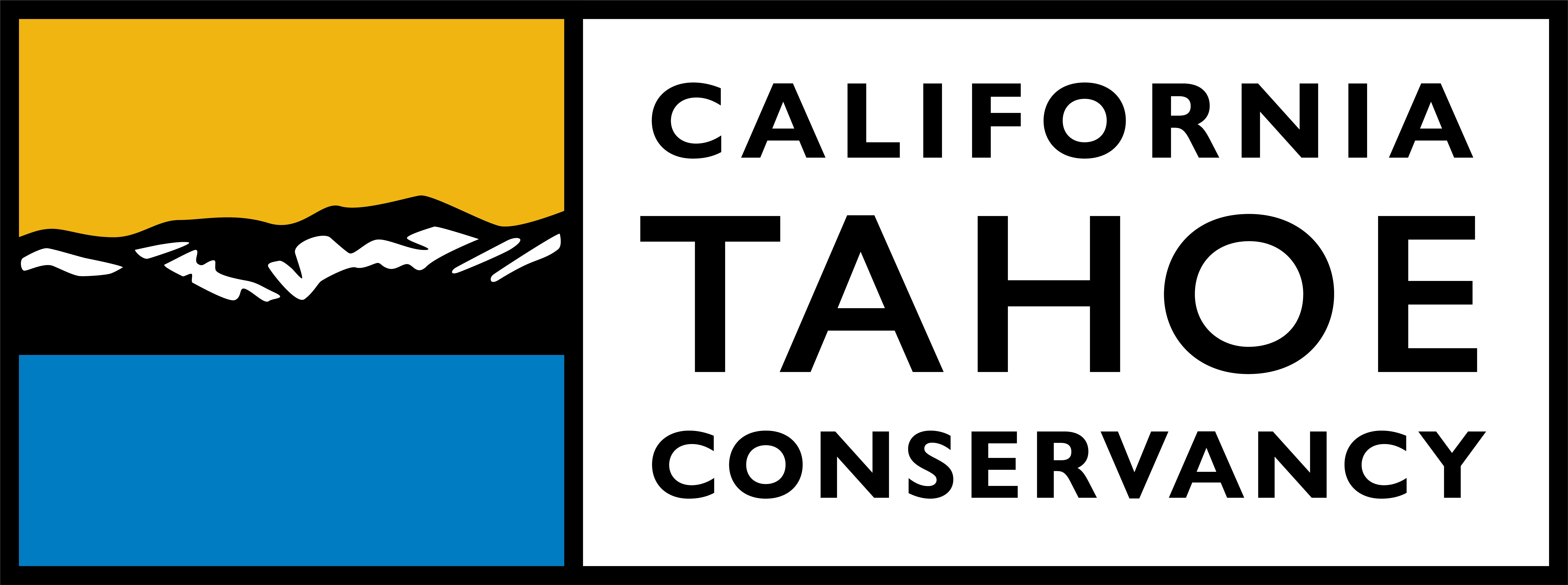Text Version of Flow Chart: Reporting an Issue on Conservancy Lands
Should you report an issue on California Tahoe Conservancy property to the Conservancy?
Is it an emergency? (example: is something on fire?)
If Yes: Call 911
If No: Yes, please report the issue to the Conservancy: tahoe.ca.gov/report, info@tahoe.ca.gov, (530) 542-5580
What Happens After You Tell Us About an Issue on Conservancy Lands:
We log your report in our tracking system and review the information in your report, guided by the following questions and taking the following actions:
Is the issue on Conservancy land?
If No: We will contact you to let you know it’s not Conservancy land. If it’s other public land, we can likely get you contact information for the land manager.
If Yes:
Does the issue relate to trees?
If No: We address reports of other land management problems (driving on Conservancy land, storing personal property, litter, etc.) on a case-by case basis. Typically, we research the issue, confer as needed with partner agencies, and visit the property. Then we contact you as we develop a plan to resolve the issue.
If yes, the issue relates to trees, does the issue relate to hazard trees or wildfire risk and forest fuels?
A hazard tree is a dead or dying tree that 1.) is about to fall, and 2.) has a target, such as a home, garage, or other structure.
If the issue relates to hazard trees, we visit the property to assess the issue. From our field inspection, we will determine how urgent is the tree issue.
If the risk of a hazard tree is urgent, our contractor will remove the tree as soon as possible.
If the risk of a hazard tree is near-term, but not urgent, we will prioritize the tree for removal with our contractor or forestry crew, ahead of comprehensive treatments.
If we determine there is no urgent or near-term risk, we will address dead and dying trees and fuels issues as a part our next comprehensive fuel reduction treatment for the neighborhood.
If the issue relates to fuels, we visit the property to assess the issue. From our field inspection, we will determine how urgent is the fuels situation.
If the fuels situation is urgent, we prioritize fuels reduction on the lot ahead of any comprehensive treatment.
If the fuels situation is not urgent, we will address dead and dying trees and fuels issues as a part our next comprehensive fuel reduction treatment for the neighborhood.
We will continue to monitor and inspect the property.
We will contact you to share what action we are taking.
What are Comprehensive Fuel Reduction Treatments?
FUEL REDUCTION: The Conservancy selectively removes trees and brush on its thousands of neighborhood lots to reduce wildfire risk to the community.
OUR GOALS: We manage forests on these public lands for wildlife habitat and to protect Lake Tahoe’s water quality, while reducing wildfire risk. Our forestry projects complement defensible space on private properties by removing hazardous fuels to modify wildfire behavior and reduce fire intensity. This also provides firefighters room to operate on Conservancy lots and defend neighborhood homes.
DESIGN: We design our fuel reduction treatments to last ten years or more. Most Conservancy neighborhood lots have had at least one fuel reduction treatment. We plan new treatments when existing treatments no longer provide their intended function.
The Conservancy owns around 4,700 properties. Most are forested, neighborhood lots.
Learn more about the California Tahoe Conservancy’s Forestry Program at tahoe.ca.gov/forestry.

